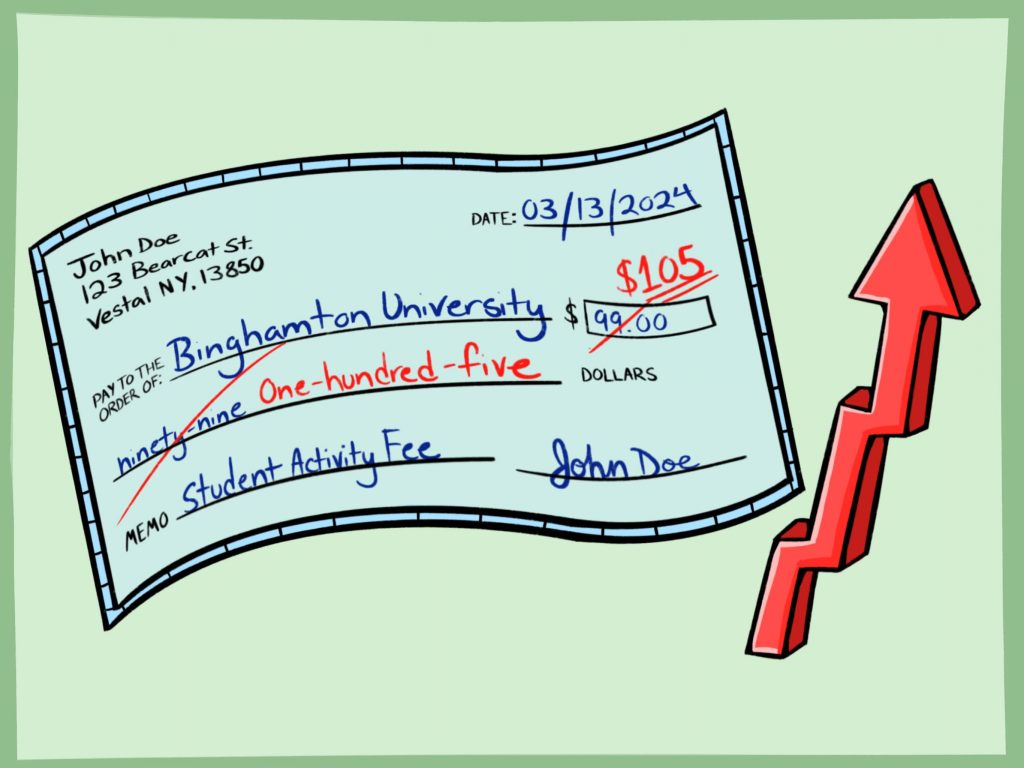This year’s Student Association (SA) election ballot will include a proposal to increase the student activity fee, the primary source of funding for about 190 student-led campus organizations.
Proposed by Daniel Croce, the vice president of finance (VPF) and a senior majoring in business administration, the goal is to earn more revenue to support the variety of programming the fee funds. If passed, the fee each semester would rise from $99 to $105 — a $12 annual increase. The last vote for an activity fee increase was in 2015.
“Given the fact of rising inflation and the fee not going up, we’ve had costs rising within the [SA] and related services without an increase in revenue,” Croce said. “The activity fee is the primary source of revenue for the [SA]. That $99 a semester supports every single club and organization on campus.”
In addition to student organizations, the activity funds essential campus services, including Off Campus College Transport (OCCT), Harpur’s Ferry and the SA’s Programming Board (SAPB). The funds also subsidize other Binghamton University services, such as the student legal clinic, the Fleishman Career Development Fund and the Student Emergency Fund.
“Our pre-COVID-19 reserves are being eaten up every year as we’re overspending what we’re actually generating in revenue every year,” Croce said. “Long term, if we want to continue growing our services — OCCT, Harpur’s ferry — or even just continue growing our budgets and our programming that our groups here on campus put on, we do need an increase.”
There are some costs that the SA cannot control, like contracts or insurance, that are continuing to rise with inflation, according to Croce. If the fee increase is rejected, the SA Congress’s Finance Committee (FinCo) will have to enact budget cuts, taking away money from organizations and initiatives.
Mackenzie Cooper, FinCo’s chair and a sophomore majoring in philosophy, politics and law, discussed how this could impact the student organizations’ budgeting.
“Our student activity fee, as it remains the same, we aren’t really going to be able to function much longer because we’ve reached a cap on how much money we can allocate to certain clubs,” Cooper said. “We’re going to have to start not being able to respect the requests and increase budgets from these clubs because we just simply aren’t going to have the money.”
Other SUNY campuses have similar rates for their activity fees. The University at Albany’s fee is $110 per semester, and Stony Brook University and Buffalo State charge $99.50 and $100, respectively.
Croce said that students vote on the activity fee and then decide how to use the money. The University collects the fee through students’ tuition, but those funds are given to the SA each semester via check.
“Pursuant to SUNY system policy, the [SA] has the authority to propose an increase in the student activity fee,” Ryan Yarosh, the University’s senior director of media and public relations, said. “Under the same SUNY policy, the [SA] conducts a referendum to continue the fee every two years, including this year. The University bills the student activity fee on term bills also, as required by SUNY policy. We respect the autonomy of the [SA] with respect to the fee proposal.”
Students will be asked two questions on the ballot — if they approve of the existence of an activity fee, and if they approve of the subsequent $6 increase.
“I believe that in the pockets of every student, it is a small, small drop in the bucket, but on a grander scale, it will really help us to operate and fund these clubs in the way that they deserve,” Cooper said. “We have so many amazing, amazing clubs on campus, and they deserve to be funded in the way that they deserve.”
SA elections will be held on March 17 on the B-Engaged platform and will run from 8 a.m. to 8 p.m.
Editor’s Note (3/15/24): This article has been edited to reflect the correct year for the last change.



